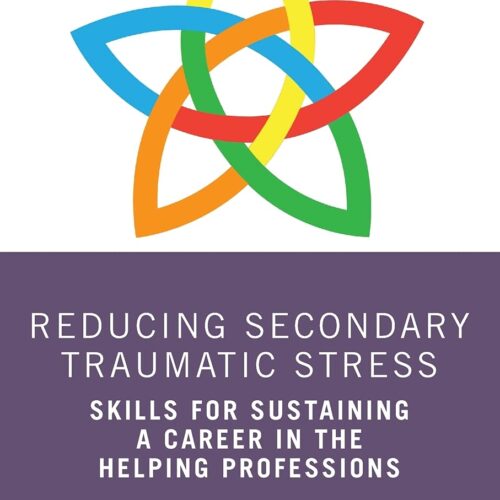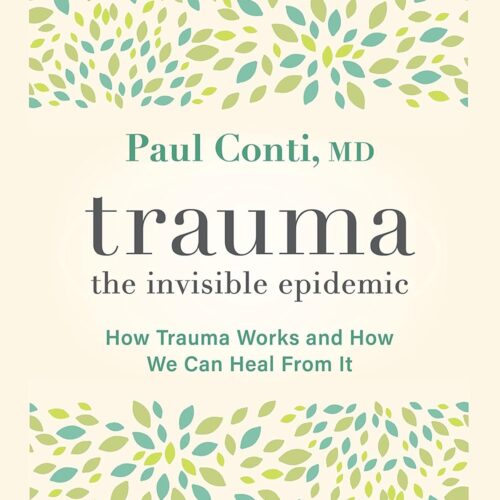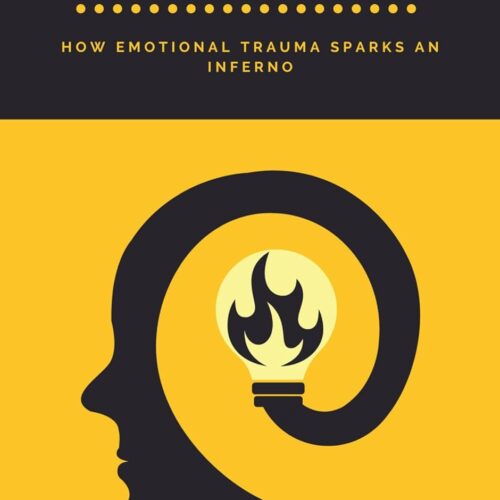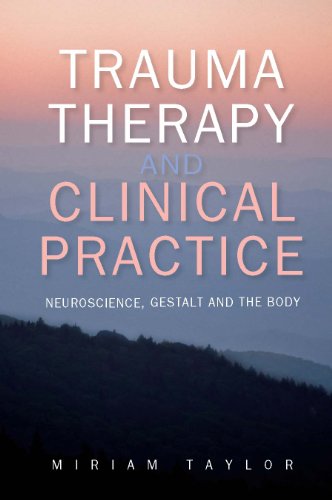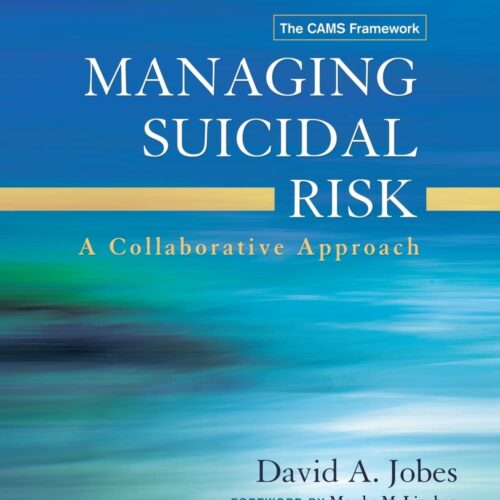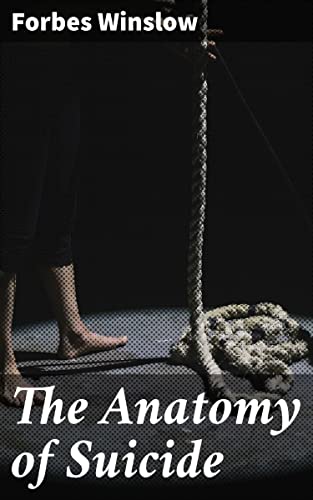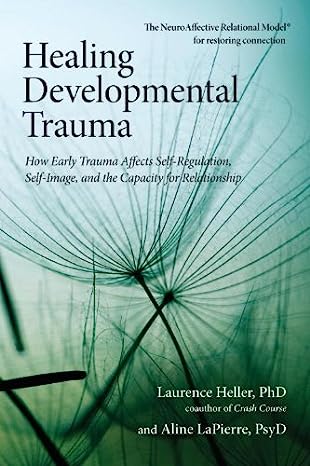Robert Bogue
November 20, 2023
No Comments
The first highlight is “helping people find their way out of suicidal despair.” That is a wonderful testimony and summary of Managing Suicidal Risk: A Collaborative Approach. Sometimes when you read a book, you get a real sense for the heart of the author, and this is the heart of David Jobes: to reduce the pain and suffering that leads to suicidal despair.
(It’s important to note that this review is about the second edition of the book, and a third edition has recently been released with substantial revisions.)
Throughout this review, I’ll frequently simplify interactions as clinician and patient interactions, as Jobes targets a clinician audience for his book. However, I strongly believe that the approaches and techniques that he teaches through the book are appropriate and applicable to anyone who is committed to helping others. Suicide prevention is an odd space of behavioral health where there is no diagnosis. There’s no need to diagnose someone with suicidal ideation, because they directly state it. There’s no need to compare a set of symptoms against a syndrome listed in DSM-V. Rather suicide risk is seen as a side effect or symptom of other listed disorders. Caring individuals would want to steer clear of providing psychotherapy – but supportive human contact would be appropriate for everyone.
Carl Rogers
Though Jobes only refers to Carl Rogers a few times, there are echoes of his influence throughout. I was introduced to Carl Rogers’ work through Motivational Interviewing. Words like acceptance, worth, autonomy, empathy, and affirmation pervade Rogers’ work. The hallmark that summarizes his perspective is “unconditional positive regard.” This is in stark contrast to the traditional way that people who struggle with suicidal ideation are treated by clinicians.
To be fair, clinicians themselves are fearful. As clinicians, they’re concerned for their license and their livelihood in the event that someone under their care dies by suicide. Jobes addresses this concern later in the book. More importantly, from a human perspective, they care. You don’t go into a profession that requires so much work and exposes you to so much trauma if you don’t have a heart for helping others. The fear of connecting with someone deeply and losing them is a fear that we all share as humans and one that too frequently creates a distance and difference. These natural tendencies in service of the patients is one of the things that Rogers saw and called on his colleagues to fight against.
Sometimes, this shows up as simple courtesy of not interrupting; other times, it shows up as acceptance that the patient’s perspective is real and correct to them at the current moment. Whether the clinician agrees or not isn’t the point, and directly disagreeing with a patient about their perspective won’t be helpful. Jobes uses other words to describe the same sense of empowerment, support, and care and the need for clinicians to accept the limits of their control.
Limits
The truth is that if a patient wants to die by suicide, they can. No clinician is going to stop them if they make the decision. What the clinician – and human helper – needs to recognize is that no matter how well intended, trained, or skilled they are, it’s not their life. We can support others through their difficult times and encourage other choices, but, ultimately, the choices are not ours to make.
Clinicians should seek agreement that suicide is an option for later – not now – without pushing for a “no suicide contract.” The thought is that the clinician and patient are collaboratively looking for other alternatives and ways to change the patient’s life such that suicide no longer appears to be a viable option. The agreement is not coercive but rather a statement of shared commitment that life should be the preferable option to death – if the important problems in life are resolved.
Understanding the Suicidal Struggle
Whether the person is a patient pursuing clinical treatment or they’re a someone who has disclosed their suicidal thoughts to another human, there is an inner conflict transpiring. The person doesn’t want to die, but they don’t want to continue living the way that they’re living today. Simply understanding the reasons why life seems unbearable is a good foundation for the work on perspective-taking and problem-solving that will lead someone away from the idea of suicide as an option.
Shneidman called it “psychache” – that psychic pain that pushes people towards the precipice of pursuing suicide. (See The Suicidal Mind.) The enlightened workers in substance use disorder (SUD) realize that SUD starts as the numbing of some psychic pain, and, progressively, the person becomes trapped by the behavior. (See Chasing the Scream, The Globalization of Addiction, and Dreamland for more on SUD.) While we focus on SUD from a drug addiction perspective, other addictions like eating, sex, and gambling share the same roots. We’re avoiding a painful psychic reality. These may – or may not – be less urgent and life threatening, though they’re more socially accepted. Even more socially accepted is the idea of being a workaholic. However, all of these expose an underlying pain that is trying to be suppressed – and that can only happen for so long. Eventually, the object of numbing becomes ineffective or overpowering.
Techniques like Motivational Interviewing are effective at managing SUD. It shares similarities in the suggestions of Jobes, and it’s based on Rogers’ work and perspectives. It’s fundamentally a listening process that focuses on what is the most important to the patient – and it helps them address the circumstances (or, more often, perspectives) that are causing them pain.
Stress, Press, Overwhelmed, and Trauma
Conceptually, we all think we know what stress is – right up to the point where we’re asked to form a formal definition. (Trust is the same way, as Robert Solomon and Fernando Flores explain in Building Trust.) Stress is something inside – an evaluation, as Richard Lazarus explains in Emotion and Adaptation. Stressors exist in the environment, but stress is evaluation of the potential impacts of that stressor. (See also How Emotions Are Made.) Stress is bad, as is thoroughly explored in Robert Sapolsky’s excellent book, Why Zebras Don’t Get Ulcers.
What Shneidman connected to stress was Henry Murray’s “press,” which is the stressor. I struggle with Murray, because much of his professional work seems as much built on fancy as fact, as I explain in my reviews of The Cult of Personality Testing and Love’s Story Told. However, that doesn’t remove the validity of the basic concept of “press.” So, press – the stressor – is invariably connected to stress, but not without the mediating factor of internal assessment. Unfortunately, we know from Superforecasting, Predictably Irrational, Noise, The Signal and the Noise, and other works that our perceptions are notoriously warped by seemingly innumerable biases. Capture takes this further into a personal spiral that can lead us to despair. It’s the personal equivalent of what Cass Sunstein describes in Going to Extremes.
In short, the precipitating factor, whether called a stressor or press, is mediated by our assessment, and that assessment is frequently distorted.
Trauma, psychological trauma, is often poorly understood as well. Psychological trauma is simply being briefly overwhelmed. (See Trauma and Recovery.) Thus, being overwhelmed is trauma, and we frequently evaluate stressors in ways that are at least temporarily overwhelming.
Sidebar: Being overwhelmed can be more long-term and connected with burnout (see Extinguish Burnout) or can be of a shorter-term duration that is more of a traumatic event or moment.
SSF-4
The SSF-4, the Suicide Status Form, is at the heart of the Collaborative and Management of Suicidality (CAMS). The form is eight pages long, with the first four pages being dedicated to assessment and treatment planning. A second section helps to track risk through the process, and the final two pages track outcomes and disposition.
It’s important to note that integrated into the form is the core principle of collaboration. In places, it encourages the patient to fill out the form. In places, it’s explicitly collaborative. In places, it’s also clinician-led. This, along with strategic repositioning of the clinician during the process of completing the form, conveys a sense of partnership that’s often missing in clinical settings – and one of which Rogers would likely approve.
There’s a substantial amount of research and wisdom packed into the form as a framework for guiding interactions. From a learning perspective, it’s a sidekick productivity aid. (See Job Aids and Performance Support.) Its consistent use allows clinicians to focus on their clinical treatment approach while being supported and guided in the CAMS framework.
The SSF-4 also serves another important purpose for clinicians. It encourages the proper documentation that limits malpractice exposure. People will be upset when their loved one is lost due to suicide, but the form encourages the documentation that appropriate care was given.
For non-clinicians, understanding the components can help shape the kinds of support that can be offered to others. Jobes selected some of the most important indicators of risk for inclusion from a list of hundreds if not thousands of possibilities.
The Big Five Variables
The SSF-4 starts with asking the patient to evaluate their psychological pain, stress, agitation, hopelessness, and self-hate. This is followed by an overall summary rating of risk. Psychological pain is the psychache discussed above from Shneidman’s work. Stress is, as we also saw above, a frequently misunderstood phenomenon; here, it’s combined with being overwhelmed. The remaining three factors are addressed separately in the following sections.
Agitation
A child blows air into a wand, forming a bubble of water and soap. The bubble floats aimlessly along until a moment of weakness causes a single spot on the bubble to fail before the entire bubble collapses in an instant. The failure isn’t subtle or slow. The child can themselves accelerate the collapse by disturbing the bubble, like poking it. Agitation, which Shneidman calls “perturbation” after the word’s use in the physical sciences, doesn’t itself cause suicide, but it hastens the path towards it if a person is already so inclined.
Hopelessness
To understand hopelessness, one must first recognize that hope itself isn’t an emotion but rather a cognitive process, as Rick Snyder explains in The Psychology of Hope. He explains that it builds on both waypower – knowing how to do something – and willpower – the desire or energy to do it. A dimension often missed in Snyder’s work is the possibility that these can come from outside the person through their relationships or society in general. For instance, in Trust, Fukuyama explains that different cultures focus their trust on the individual, family, and society, and the greater degree that trust is focused externally, the greater the degree that hope has seeds outside one’s own capacity.
For willpower, we find that Roy Baumeister has a work with the same name. In short, it’s an exhaustible and regenerative resource that can be strengthened like a muscle. (See also Antifragile for more on strengthening.) Baumeister’s work is also represented directly by Jobes in the concept of self-hate.
Self-Hate
Understanding how people can become self-destructive rather than having self-esteem is a challenge. Self-hate leads to self-destructive behaviors – which is obviously a concern for suicide. In Delinquent Boys, Albert Cohen explores the need for status and the inevitable disappointment that sometimes leads people to a path of self-hate and delinquency. Albert Bandura’s work on Moral Disengagement creates an opportunity to see how people can do reprehensible acts based on structure and how they might come to develop self-hate as a result of their acceptance that they have done bad things.
A stop nearer on the path to self-hate is shame. Brené Brown has described herself as a shame researcher at times, and her library of authored works is extensive – see Daring Greatly, Rising Strong, The Gifts of Imperfection, Braving the Wilderness, and more. The key to understanding the difference between guilt and shame is that guilt is about “I’ve done wrong” and shame is that “I am wrong.” Left unchecked, shame can easily develop into self-hate. If people with shame aren’t able to separate what they’ve done from who they are and accept their good attributes, they’ll land in a place of self-hatred – and therefore vulnerability to suicide.
Acceptance
Before continuing, it’s important to note that the antidote to shame and self-hate is acceptance. As Richo explains in How to Be an Adult in Relationships, acceptance is critical for our relationships with others and ourselves. No one is perfect. We cannot expect to be successful if our goal is constant perfection. In The Paradox of Choice, Schwartz explains how maximizers – those who have to have perfection – are less happy with their lives.
For those with high standards, the immediate pushback is that perfection is possible. This is true in the short term but is necessarily incorrect across long periods of time. The goal for anyone should be the best they can do – excellence. Carol Dweck’s work on Mindset and Mihaly Csikszentmihalyi’s work on Flow make that clear. We can grow, change, and be incredibly productive. However, we cannot do that if we’re focused on blaming ourselves.
Another, more fundamental, perspective is to recognize that one of the key tenets of meditation and mindfulness is the acceptance of thoughts as they pass followed by a release. Instead of judging our thoughts, we simply observe them. We accept them as a natural and normal part of consciousness. (See Altered Traits.) The more we can accept that even good people do bad things, the more we can release self-hate.
Preoccupied with Others
One of the observations about suicidal people is that they can become overly concerned or even obsessed with others’ perceptions of them. Reiss might describe this as someone who is high on status or acceptance (inclusion, in this context). (See Who Am I? for more.) Some are motivated by the perceptions of people around them and, as a result, are particularly sensitive to bullying and other forms of social discrimination.
There has been good and credible criticism of social media and the rise of both depression and anxiety. (See Alone Together for more.) However, so, too, has there been research showing that technology and our always-on, always-connected world can help people find connections with others that wouldn’t have been possible before. So, while our technological world has the potential for harm, it has the capacity to help as well.
It’s important to note that it’s the preoccupation that’s the challenge. The tendency to ignore other perspectives – whether external or internal – is problematic.
Preoccupied with Thoughts
Another type of person is “in their own world.” They’re consumed by their own thoughts and perceptions. While there’s a validation of some objective – if potentially cruel – facts with those preoccupied with what others think, there’s no objectivity when someone is preoccupied with their own thoughts. There is no automatic mechanism that leads to an accurate and grounded sense of the world. While focusing on oneself and improvement can allow for the kind of advances that are discussed in The Rise of Superman, so, too, does the disconnection from external signals represent a risk. This is the sort of problem that Capture is concerned with.
Reasons for Living and Reasons for Dying
When you see suicide as the fight between reasons for living and reasons for dying – rather than a binary sense of a desire to die – one can see how there is a constant internal battle. In Principles of Topological Psychology, Kurt Lewin explains force fields and the forces that move people from one state to another or tend to keep them in the current state. Some research implies that the reasons for dying are more powerful than the reasons for living. That may be the case. It may also be the case that the reasons for living in suicidal people aren’t as strong as reasons for dying.
Research seems to indicate that suicidal people have less aspirational and inspirational reasons for living. They’re less inclined to follow themes of hope, future, plans, and goals compared to those who are not suicidal. In short, the reasons for living are hollow – and they’re also the same reasons people would give for dying.
Prohibition of Self-Harm
Thomas Joiner’s Myths About Suicide catalogs a set of myths. The first one is that “Suicide is an easy escape, that cowards use.” In Why People Die by Suicide, his interpersonal theory of suicide explains that people who die by suicide develop a capacity for self-harm. They somehow override the biological imperative to live. Managing Suicidal Risk shares, “The eye-blink response data show that multiple attempers were extremely reactive to the unpleasant images.”
We don’t know whether this is a result of causing them to recall their own attempt or if it’s just a particularly strong natural aversion to harm, including self-harm. However, it is interesting how it may be that there may be some visceral, intrinsic, and immovable aversion to self-harm that keeps these multiple attempters alive. To be clear, I feel sorrow that their lives are such that they’ve been forced to come against this barrier.
Detachment
A hallmark of Buddhism is the need for detachment. It’s not disengagement. It’s still doing the best you can – but recognizing that you don’t control the outcomes. (See The Happiness Hypothesis and Resilient for more.) Therapists confronted with a suicidal patient feel the humanistic pull to save the other person’s life, but the problem is that they can’t. They can influence – and should. They can care – and they should. However, it’s always the person’s decision to live or die.
One of the hardest things for new therapists to accept is that they can’t accept responsibility for the behaviors of their patients. They’re there to support, but the choices are ultimately the other person’s to make. If a therapist can’t detach, then their emotions will become entangled in the situation. They’ll change their responses to defend their own feelings – whether or not that’s in the best interest of the patient.
Legitimate Pain
Consider this statement: “I have never talked to a suicidal person who did not have legitimate needs behind his or her suicidal words, thoughts, and behaviors.” This direct quote leads us to the most important and appropriate path. Rather than simply prohibiting the option of death by suicide, perhaps we should focus on understanding the factors in the person’s life that lead them to consider it – or want it. We can remain focused on measures to prevent suicide, but shouldn’t we focus on the items that would remove the burdens, barriers, and pain that make them want suicide in the first place? Instead of trapping them in a living hell, shouldn’t we fix the things that are, to them, making it a living hell?
John Milton said, “The mind is a universe and can make a heaven of hell, a hell of heaven.” While it’s often not appropriate to change the objective circumstances that a patient (or friend) is in, it can be that we can help them change their perspective on things that are relatively neutral. There’s a fine line here. It’s not the idea of polishing a turd. Instead, it’s about finding ways to accept the reality and make the best of it. (Acceptance is another of Richo’s “Five As” in How to Be an Adult in Relationships.)
Managing Means
Whether it’s a firearm or a stash of medications, having means available to someone is not ideal. We know that most people who have suicidal ideation and plans won’t change their means. If they’ve already expressed “the” method that they’ve chosen, it’s appropriate to prioritize focus on (at least temporarily) reducing access to that method. If it’s a firearm that’s the chosen method, finding strategies to reduce access, from locking it up to removing it from the home, are appropriate. If medications can be safely locked up by other members of the home, that should be pursued. It’s possible to leave a small quantity unlocked for legitimate needs and keep the larger quantities off limits.
Some methods are relatively impossible to restrict means for. If someone decides to die by suffocation (hanging), there’s almost always something around that can accomplish that goal. If they decide they’re going to crash their automobile into something, you can look for ways to limit access to their automobile, but if they need to live, this may be impractical.
In short, while means restriction is a good idea, it may not always be as practical as we’d like it to be. Jobes makes the point that, as a clinician, it’s your decision whether to continue treating if they’re unwilling to restrict access to means – and he’s clear this is a tricky issue.
Observationally, I’d say that there will be some people who you won’t find a way to reduce their chosen means. However, I believe there are strategies that can be employed that will signal you understand the reasons for not limiting means – like I feel I need my gun for protection – and simultaneously engage them in strategies that will have a protective effect.
Consider someone who says that they’ll die by firearm – but it will be a specific one, and they have multiple. In this case, perhaps this firearm can be locked up in their home in a way that they don’t have immediate access – like having a friend change the combination and keep it, or keep the keys to a key-based lock. They can keep another gun for protection, but the one they’d use for suicide isn’t available while everyone is working on keeping them alive.
Gun owners are very resistive to the guns leaving their homes in most cases. Strategies that leave the guns in their home but locked in ways they must ask for access from another person can sometimes navigate this space.
Coping Ideas
The development of a coping idea list is a part of the recommended practice. It’s simply a list of suggestions for things that someone can do when they feel particularly suicidal. It can be simple, like take a walk or phone a friend. Jobes makes the point that he’ll sometimes flip over his business card and write these ideas on it so that they have these ideas – and access to resources when these ideas aren’t enough.
Episodic
Key in understanding suicide is that suicide is often episodic. It’s something that comes and goes in waves. Intense suicidal ideation may last an hour or less. We need to make sure that we enable people with skills and resources that they can access during these times of intensity. It’s important to understand and plan, but it’s equally important to encourage and enable people to be successful as partners in Managing Suicidal Risk.
